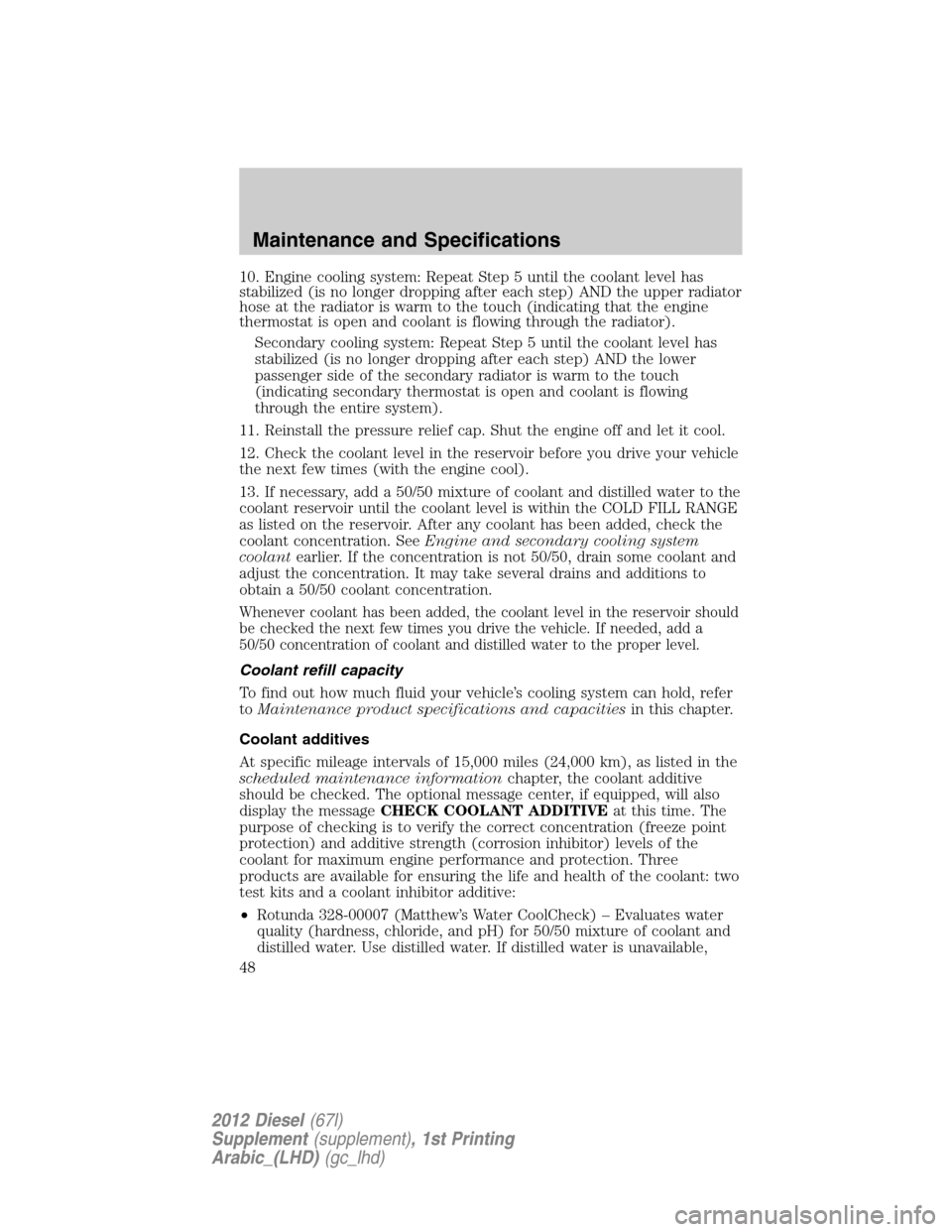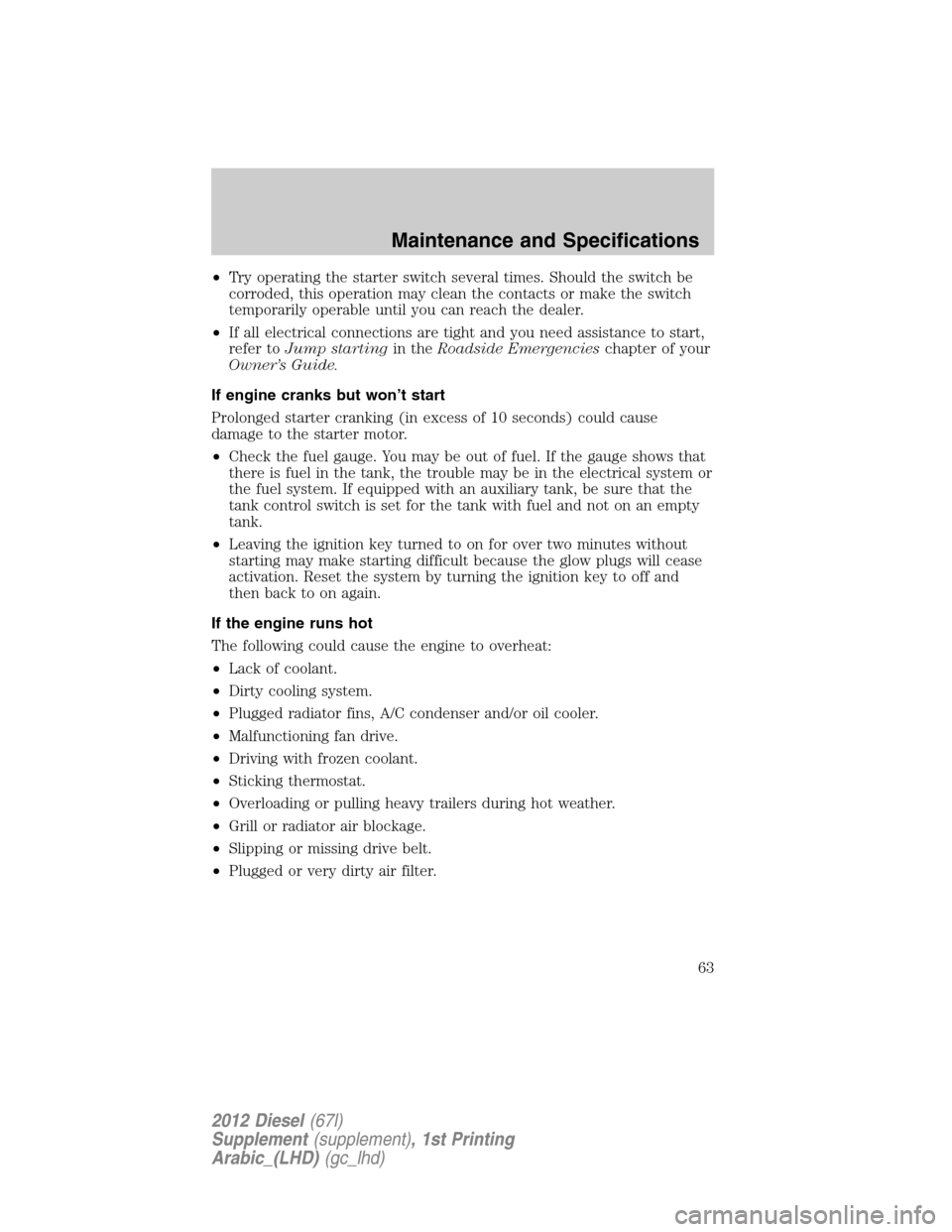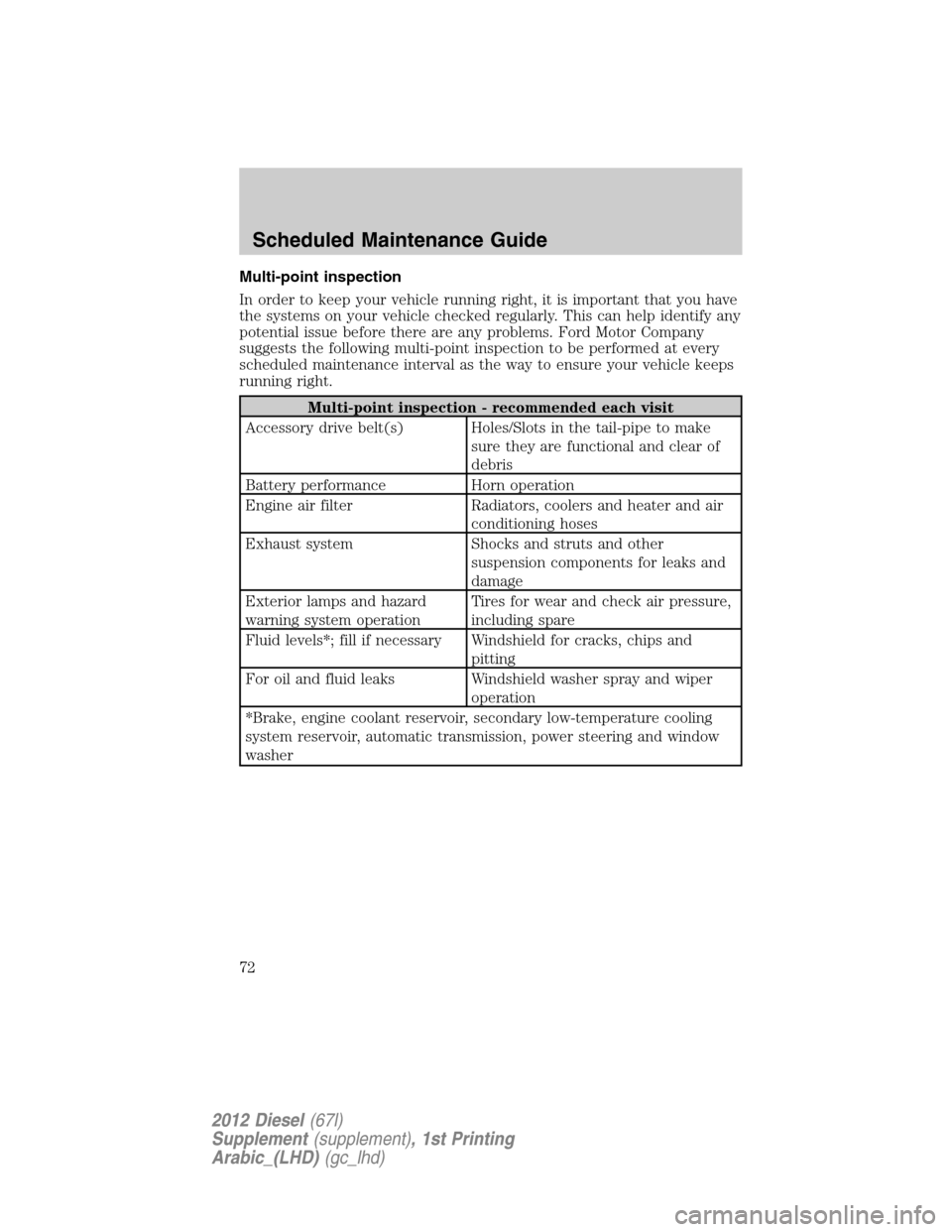Page 48 of 93

10. Engine cooling system: Repeat Step 5 until the coolant level has
stabilized (is no longer dropping after each step) AND the upper radiator
hose at the radiator is warm to the touch (indicating that the engine
thermostat is open and coolant is flowing through the radiator).
Secondary cooling system: Repeat Step 5 until the coolant level has
stabilized (is no longer dropping after each step) AND the lower
passenger side of the secondary radiator is warm to the touch
(indicating secondary thermostat is open and coolant is flowing
through the entire system).
11. Reinstall the pressure relief cap. Shut the engine off and let it cool.
12. Check the coolant level in the reservoir before you drive your vehicle
the next few times (with the engine cool).
13. If necessary, add a 50/50 mixture of coolant and distilled water to the
coolant reservoir until the coolant level is within the COLD FILL RANGE
as listed on the reservoir. After any coolant has been added, check the
coolant concentration. SeeEngine and secondary cooling system
coolantearlier. If the concentration is not 50/50, drain some coolant and
adjust the concentration. It may take several drains and additions to
obtain a 50/50 coolant concentration.
Whenever coolant has been added, the coolant level in the reservoir should
be checked the next few times you drive the vehicle. If needed, add a
50/50 concentration of coolant and distilled water to the proper level.
Coolant refill capacity
To find out how much fluid your vehicle’s cooling system can hold, refer
toMaintenance product specifications and capacitiesin this chapter.
Coolant additives
At specific mileage intervals of 15,000 miles (24,000 km), as listed in the
scheduled maintenance informationchapter, the coolant additive
should be checked. The optional message center, if equipped, will also
display the messageCHECK COOLANT ADDITIVEat this time. The
purpose of checking is to verify the correct concentration (freeze point
protection) and additive strength (corrosion inhibitor) levels of the
coolant for maximum engine performance and protection. Three
products are available for ensuring the life and health of the coolant: two
test kits and a coolant inhibitor additive:
•Rotunda 328-00007 (Matthew’s Water CoolCheck) – Evaluates water
quality (hardness, chloride, and pH) for 50/50 mixture of coolant and
distilled water. Use distilled water. If distilled water is unavailable,
Maintenance and Specifications
48
2012 Diesel(67l)
Supplement(supplement), 1st Printing
Arabic_(LHD)(gc_lhd)
Page 63 of 93

•Try operating the starter switch several times. Should the switch be
corroded, this operation may clean the contacts or make the switch
temporarily operable until you can reach the dealer.
•If all electrical connections are tight and you need assistance to start,
refer toJump startingin theRoadside Emergencieschapter of your
Owner’s Guide.
If engine cranks but won’t start
Prolonged starter cranking (in excess of 10 seconds) could cause
damage to the starter motor.
•Check the fuel gauge. You may be out of fuel. If the gauge shows that
there is fuel in the tank, the trouble may be in the electrical system or
the fuel system. If equipped with an auxiliary tank, be sure that the
tank control switch is set for the tank with fuel and not on an empty
tank.
•Leaving the ignition key turned to on for over two minutes without
starting may make starting difficult because the glow plugs will cease
activation. Reset the system by turning the ignition key to off and
then back to on again.
If the engine runs hot
The following could cause the engine to overheat:
•Lack of coolant.
•Dirty cooling system.
•Plugged radiator fins, A/C condenser and/or oil cooler.
•Malfunctioning fan drive.
•Driving with frozen coolant.
•Sticking thermostat.
•Overloading or pulling heavy trailers during hot weather.
•Grill or radiator air blockage.
•Slipping or missing drive belt.
•Plugged or very dirty air filter.
Maintenance and Specifications
63
2012 Diesel(67l)
Supplement(supplement), 1st Printing
Arabic_(LHD)(gc_lhd)
Page 72 of 93

Multi-point inspection
In order to keep your vehicle running right, it is important that you have
the systems on your vehicle checked regularly. This can help identify any
potential issue before there are any problems. Ford Motor Company
suggests the following multi-point inspection to be performed at every
scheduled maintenance interval as the way to ensure your vehicle keeps
running right.
Multi-point inspection - recommended each visit
Accessory drive belt(s) Holes/Slots in the tail-pipe to make
sure they are functional and clear of
debris
Battery performance Horn operation
Engine air filter Radiators, coolers and heater and air
conditioning hoses
Exhaust system Shocks and struts and other
suspension components for leaks and
damage
Exterior lamps and hazard
warning system operationTires for wear and check air pressure,
including spare
Fluid levels*; fill if necessary Windshield for cracks, chips and
pitting
For oil and fluid leaks Windshield washer spray and wiper
operation
*Brake, engine coolant reservoir, secondary low-temperature cooling
system reservoir, automatic transmission, power steering and window
washer
Scheduled Maintenance Guide
72
2012 Diesel(67l)
Supplement(supplement), 1st Printing
Arabic_(LHD)(gc_lhd)